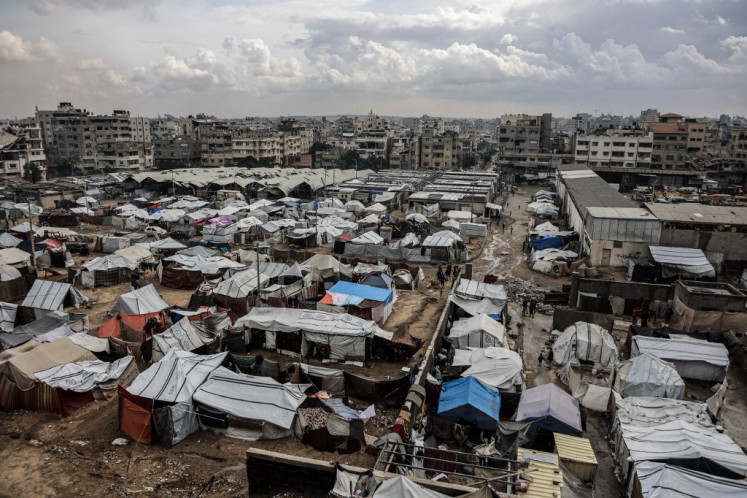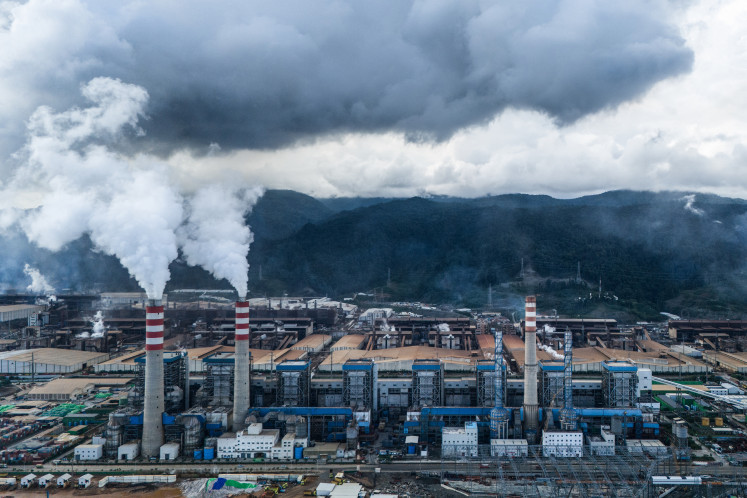Popular Reads
Top Results
Can't find what you're looking for?
View all search resultsPopular Reads
Top Results
Can't find what you're looking for?
View all search resultsOfficials suggest bylaw, new authority to accelerate TOD projects
The slow progress on transit oriented development (TOD) projects in the capital is believed to be caused by the absence of regulations that would provide solid ground for all stakeholders to proceed with their tasks
Change text size
Gift Premium Articles
to Anyone
T
he slow progress on transit oriented development (TOD) projects in the capital is believed to be caused by the absence of regulations that would provide solid ground for all stakeholders to proceed with their tasks.
The Jakarta administration actually issued a new decree in May, Gubernatorial Decree No. 67/2019 on the implementation of TOD, to supplement two existing decrees, No. 44/2017 on TOD and No. 140/2017 on the appointment of MRT Jakarta as TOD operator.
Jakarta urban planning and environment bureau head Afan Adriansyah said that the decree issued in May provided a clearer, step-by-step procedure for TOD projects.
A TOD is a high-density, mixed-use area located within walking distance of public transportation hubs. TOD projects require the heavy involvement of mass transit operators like city-owned MRT Jakarta and Transjakarta, which were responsible for providing transportation services as well as building and managing the TODs.
MRT Jakarta is the only company the city has appointed to manage TODs.
“The [TOD] operator has the right to submit a proposal to the governor that defines the TOD area and the scope of management,” Afan said at a discussion on Monday, citing Article 9 of decree No. 67.
“The proposal should contain studies on traffic [flow] and public transport hubs in the area, as well as social, economic and environmental impact [reports],” he added.
Once the governor approved the proposal, the operator could proceed with developing the urban design guideline (PRK) and obtaining all relevant building permits.
The operator should also offer a tender to find a partner for developing the project, which would be funded through the public-private partnership scheme.
For example, said Afan, the Dukuh Atas TOD project in Central Jakarta was currently awaiting the governor’s approval while MRT Jakarta was finalizing the PRK.
“We really hope that [the PRK] will be completed soon,” he said, but did not provide a time frame or a deadline.
MRT Jakarta held in April 2018 the groundbreaking ceremony for the TOD, which is located in the vicinity of Dukuh Atas Station.
The planned development includes a transit plaza, fitted with walkways to guide MRT passengers in switching transportation modes.
Dukuh Atas is a primary interchange and is within walking distance of the Dukuh Atas MRT Station, as well as Sudirman Station serving the Commuter Line, the BNI City Station serving the Railink airport train and the Dukuh Atas shelter of the Transjakarta BRT.
However, little progress has been made on the Dukuh Atas TOD since the project broke ground more than a year ago.
Greater Jakarta Transportation Agency (BPTJ) infrastructure director Edi Nursalam said that a gubernatorial decree was not enough, and that a bylaw was needed instead.
“I think the city should develop the PRK and issue it as a bylaw,” he said. “[This way], all future TOD projects by city- or state-owned enterprises can refer to the [PRK] in the bylaw. What is happening today is the other way around. The operator develops the PRK that the city then approves.”
Edi added that a bylaw would also provide a stronger legal basis than a gubernatorial decree.
It was the BPTJ’s view that the Jakarta administration had difficulties coordinating on developing the TODs with state-owned railway company PT Kereta Api Indonesia (KAI) through its subsidiary, PT Kereta Commuter Indonesia (KCI), which operates the Commuter Line rail service.
KAI has partnered with other state-owned developers like Perum Perumnas and PT Pembangunan Perumahan on TOD projects at several Commuter Line stations, including Juanda Station in Central Jakarta and Tanjung Barat Station in South Jakarta.
“The city, however, should proceed with whatever regulations it has at present. But for the future, it should really consider regulating TOD through a bylaw,” said Edi.
He said he also saw the potential for developing other TODs to accommodate major Transjakarta shelters, for example in Kalideres, West Jakarta, and in Kampung Rambutan, East Jakarta
The BPTJ was also looking at the Commuter Line’s Rawa Buntu, Kampung Bandan, Senen, Manggarai, Tanah Abang and Tanjung Priok stations.
The potential for building other TODs has emerged as construction on the LRT Jabodebek (Greater Jakarta) nears completion, especially to accommodate LRT stations located along Jakarta’s border with Bogor and Bekasi in West Java.










